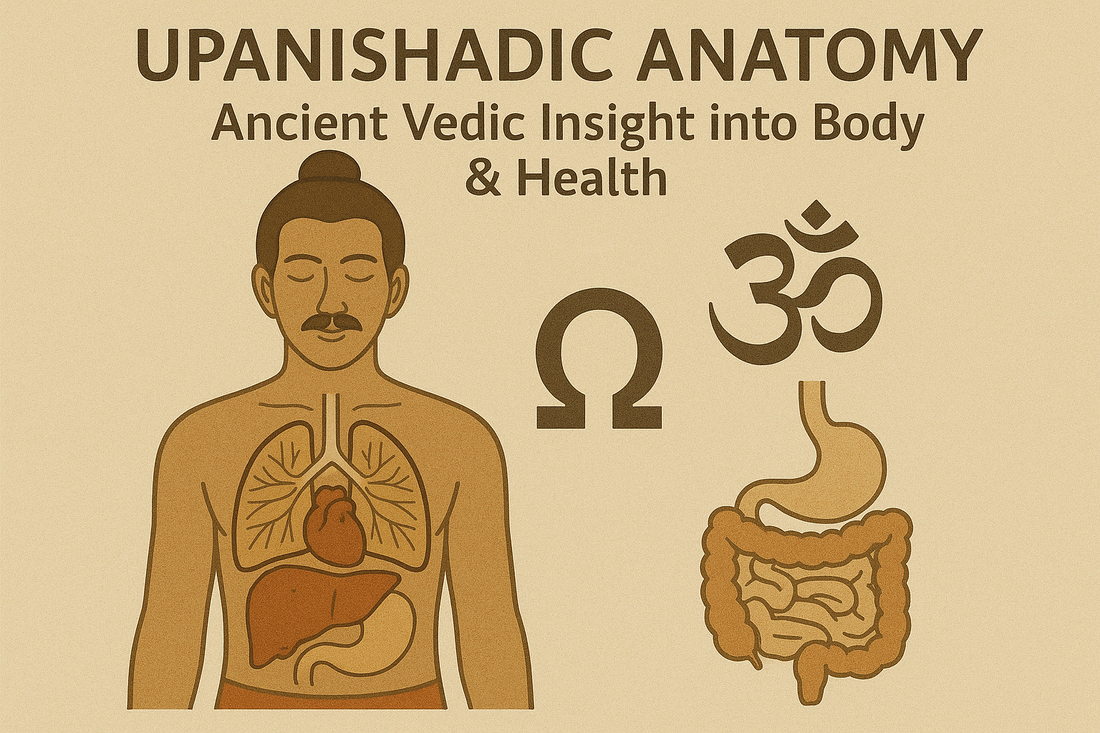Upanishadic Anatomy: Ancient Vedic Insight into Body & Health

Long before modern medicine developed complex diagrams of the human body, the Upanishads—the spiritual texts of ancient India—offered a subtle, profound understanding of human anatomy. But their approach wasn’t limited to flesh and bones; it focused on the layers of existence, the energetic pathways, and the connection between the body, mind, and soul.
This spiritual anatomy forms the foundation of both Ayurveda and Yoga, guiding not just physical wellness but complete inner harmony.
🧘♂️ What is Upanishadic Anatomy?
Unlike contemporary anatomy, which focuses on organs and systems, Upanishadic anatomy is based on five koshas (layers of being) and nadis (energy channels). It views the human being as a multi-dimensional structure:
The Five Koshas – Layers of Human Existence:
-
Annamaya Kosha – The physical body (made of food)
-
Pranamaya Kosha – The life force or energy body
-
Manomaya Kosha – The mental-emotional body
-
Vijnanamaya Kosha – The wisdom or intuitive body
-
Anandamaya Kosha – The blissful spiritual layer
According to the Taittiriya Upanishad, true wellness comes from nourishing all five layers—not just the physical body.
🌿 The Heart, Mind & Breath Connection
The Upanishads describe the heart (Hridaya) not just as a physical organ but as the seat of consciousness and truth (Satya). The Chandogya Upanishad says:
“In the space within the heart is everything: heaven, earth, sun, moon, lightning, stars… Whatever is within and without is there.” – Chandogya Upanishad 8.1.3
This understanding led to Ayurvedic practices like:
-
Abhyanga: Massaging the heart area for emotional balance
-
Pranayama: Regulating breath to calm the mind
-
Herbal tonics like Arjuna for both physical and emotional heart health
✨ Nadis and Marma: The Energy Map
Upanishadic texts and later Yoga Upanishads describe 72,000 nadis, with three primary nadis being:
-
Ida (left side) – calming, lunar energy
-
Pingala (right side) – activating, solar energy
-
Sushumna (central channel) – path of spiritual awakening
These form the foundation of breathwork (Pranayama), chakra balancing, and even Marma point massage in Ayurveda.
🌼 How This Ancient Insight Helps Today
Understanding Upanishadic anatomy invites us to:
-
Go beyond symptoms and treat the root cause
-
See disease as disconnection from true Self
-
Use daily rituals, herbs, breath, and meditation to return to balance
At Upanishad Ayurveda, this philosophy inspires everything—from our Swarnaprashan® immunity drops that nurture children’s development, to herbs like Mulethi and Amla that support not just the body, but energy and clarity too.
🕊️ Final Thought
The Upanishads remind us that healing is spiritual. The body is sacred, the breath is intelligent, and our true nature is bliss. When we care for our health with reverence, we don’t just heal—we awaken.
Let Ayurveda and the wisdom of the Upanishads guide your health—not as separate sciences, but as one divine path to wholeness.








